The Supreme Court Clinic will take you to the nation’s highest court.
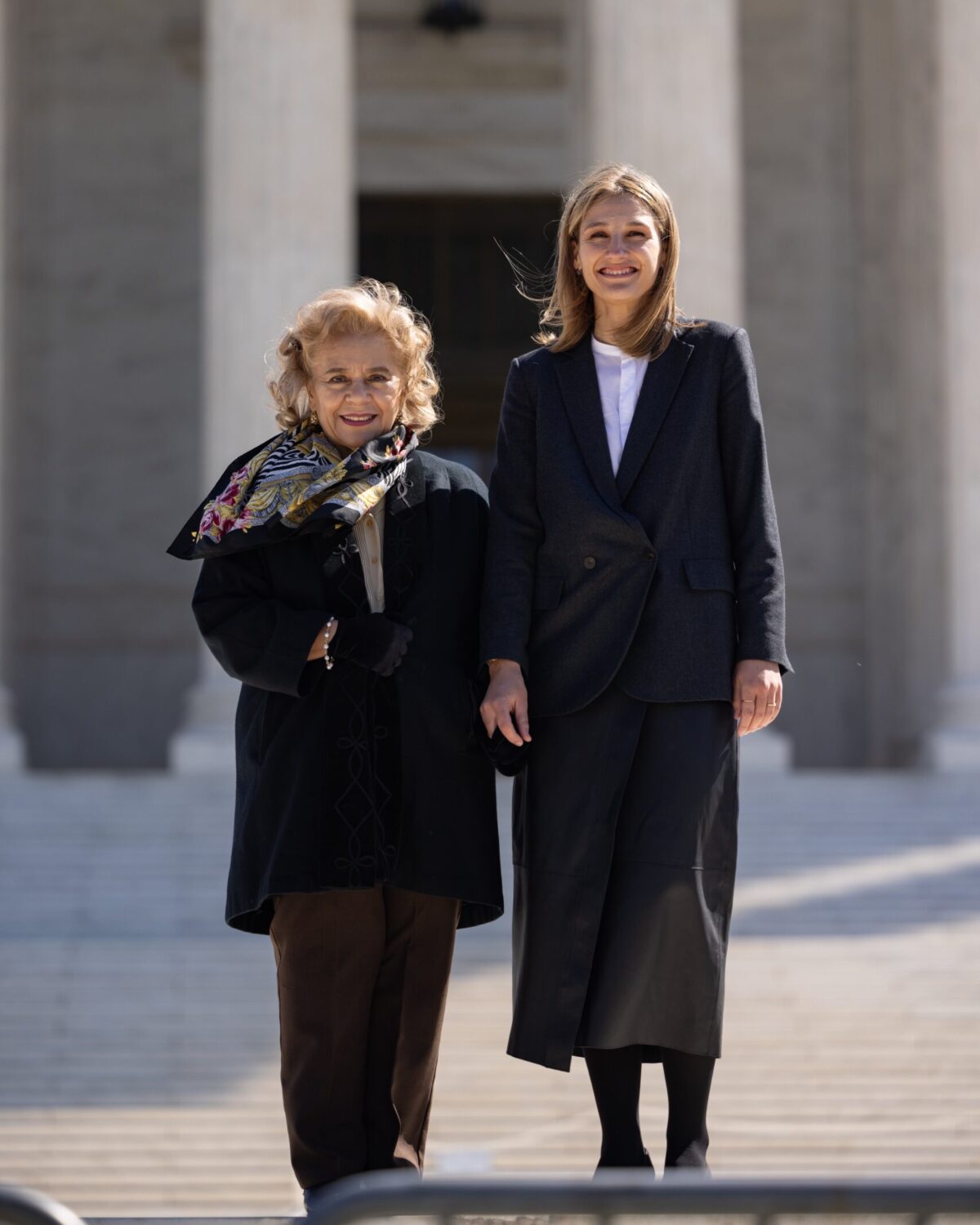
That’s because the clinic prepares its students for that unique and challenging opportunity. They get plenty of firsthand experience working on cases—with national headlines for a recent victory—and continue to make an impact post-graduation, including clinic alumni who argue and win at the court.
Additionally, the class travels to Washington, D.C., each semester so that students can observe what happens inside the court. In March 2024, that included the chance to see arguments by three Texas Law alumni over two days.
Anya Bidwell ’16, now a senior attorney at the Institute for Justice in Arlington, Virginia, was among those alumni. She argued Gonzalez v. Trevino—her first case before the Supreme Court.
While standing outside the Supreme Court following her argument, Bidwell recalled being a new law student. “I remember then Professor Chesney—Dean Chesney now—asking, ‘What do you want to do when you grow up?’ I said, ‘I want to litigate constitutional law.’ But this is the kind of thing you can’t even say out loud because it just doesn’t happen very often,” Bidwell said. “But I was lucky enough to get into the Supreme Court Clinic, and from there, everything follows.”
Taking on Cases
Clinic students learn not only how U.S. Supreme Court written and oral advocacy differs from that at other stages of legal practice but also universally applicable advocacy skills, including creative problem-solving and strategic thinking, collaborative research and drafting, and mindful tailoring of legal arguments to resonate with different audiences—whether justices, law clerks, the media, or institutional and individual clients.

Classes and casework familiarize clinic students with Supreme Court procedures and practice. They represent actual clients appearing before the Court as petitioners seeking review of adverse lower-court decisions, respondents defending favorable lower-court decisions, or amici curiae participating in other parties’ cases because their interests could be affected by the court’s decision. Additionally, students look for potential cases the clinic can take on, conduct in-depth research, and draft briefs. The clinic has also conducted more than 20 moots—which simulate an appellate argument—in just the past five years, including for Texas Law faculty and alumni.
Cases are either at the certiorari or the merits stage and may be in any substantive area of law. When it was founded in 2006 by Professor Michael Sturley (who remains a clinic co-director) and David Frederick ’89, the clinic took a wide range of cases. Some involved maritime and plaintiff-side cases, but the clinic also took on immigration and criminal matters. The current clinic co-directors, Professors Lisa Eskow and Erin Busby, bring their expertise to particularly focus on civil rights litigation and qualified immunity related to the Fourth Amendment—prohibiting unreasonable searches and seizures—and First Amendment—protecting freedom of speech and religion. “We look for cases that check the boxes for the Supreme Court, meaning they meet criteria the Court looks at when deciding whether to grant, and they afford our students an excellent pedagogical experience,” says Eskow. In recent years, the clinic’s clients range from civil rights plaintiffs with constitutional claims to public interest organizations and criminal defendants.
Students say they’re drawn to the clinic for practical appellate experience and the opportunity to learn from and work with Eskow, Busby, and Sturley. Regardless of what direction their eventual career may take, the clinic experience offers practical lessons.
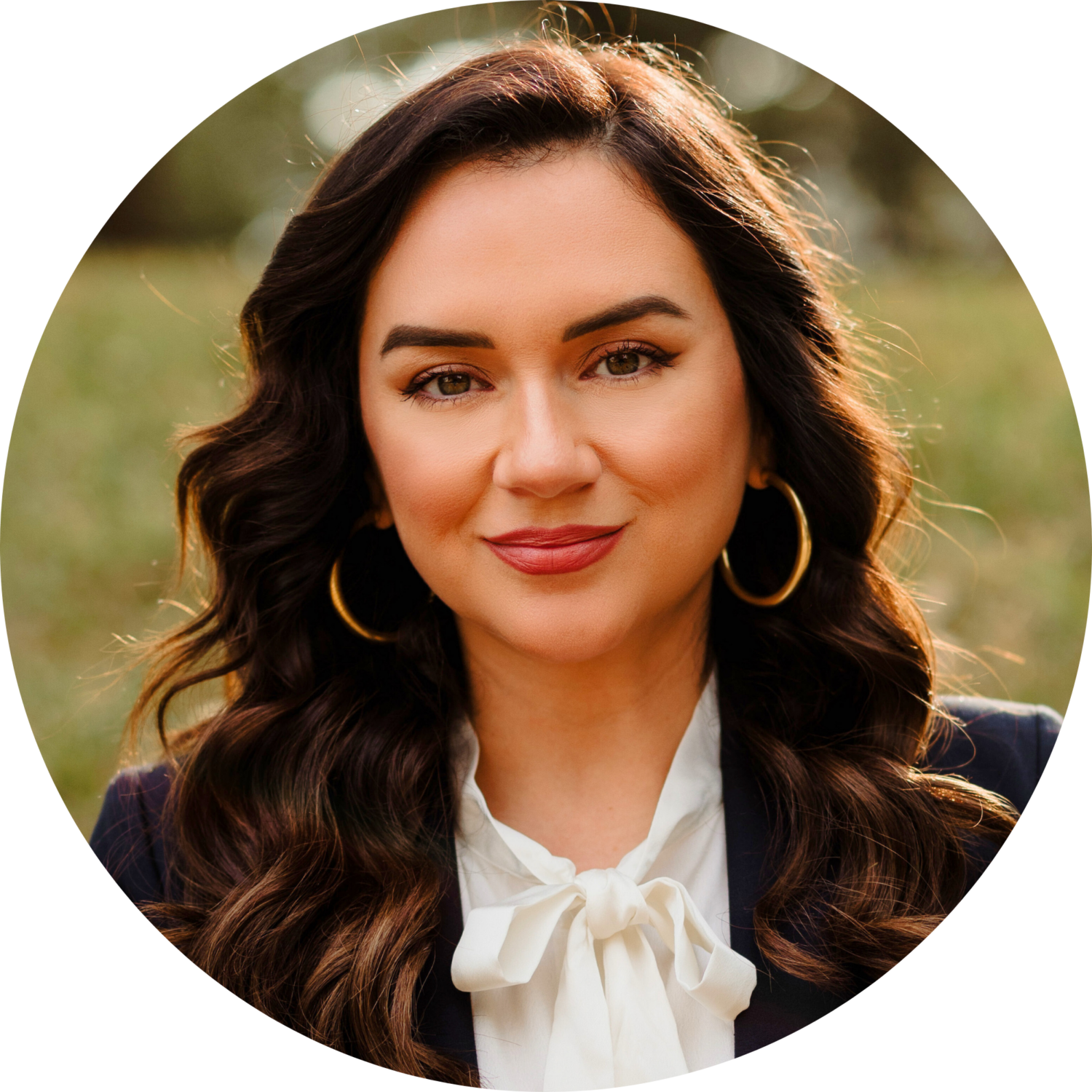
It was the single most useful experience in law school for gaining the skills that I use in practice today.
Zoraima Pelaez ’22
As a student, Zoraima Pelaez ’22 knew she wanted to practice impact litigation, which produces far-reaching results. “The Supreme Court Clinic was really the place to best prepare me for that,” says Pelaez, a staff attorney at the ACLU Reproductive Freedom Project in New York City. “It was the single most useful experience in law school for gaining the skills that I use in practice today,” she says, including time-sensitive legal research and strategy, analysis, and writing to craft the best possible arguments for emergency relief.
Fellow alums also cheer the clinic’s results. “They’re doing terrific work,” says Scott Keller ’07, partner with Lehotsky Keller Cohn LLP in D.C. and former solicitor general of Texas, who was a student in the clinic’s first-ever class and is the only practicing lawyer to have argued at least 10 cases at both the Supreme Court and the Texas Supreme Court. “It is a boon to the law school that you have terrific professors and former alums who support the clinic.”
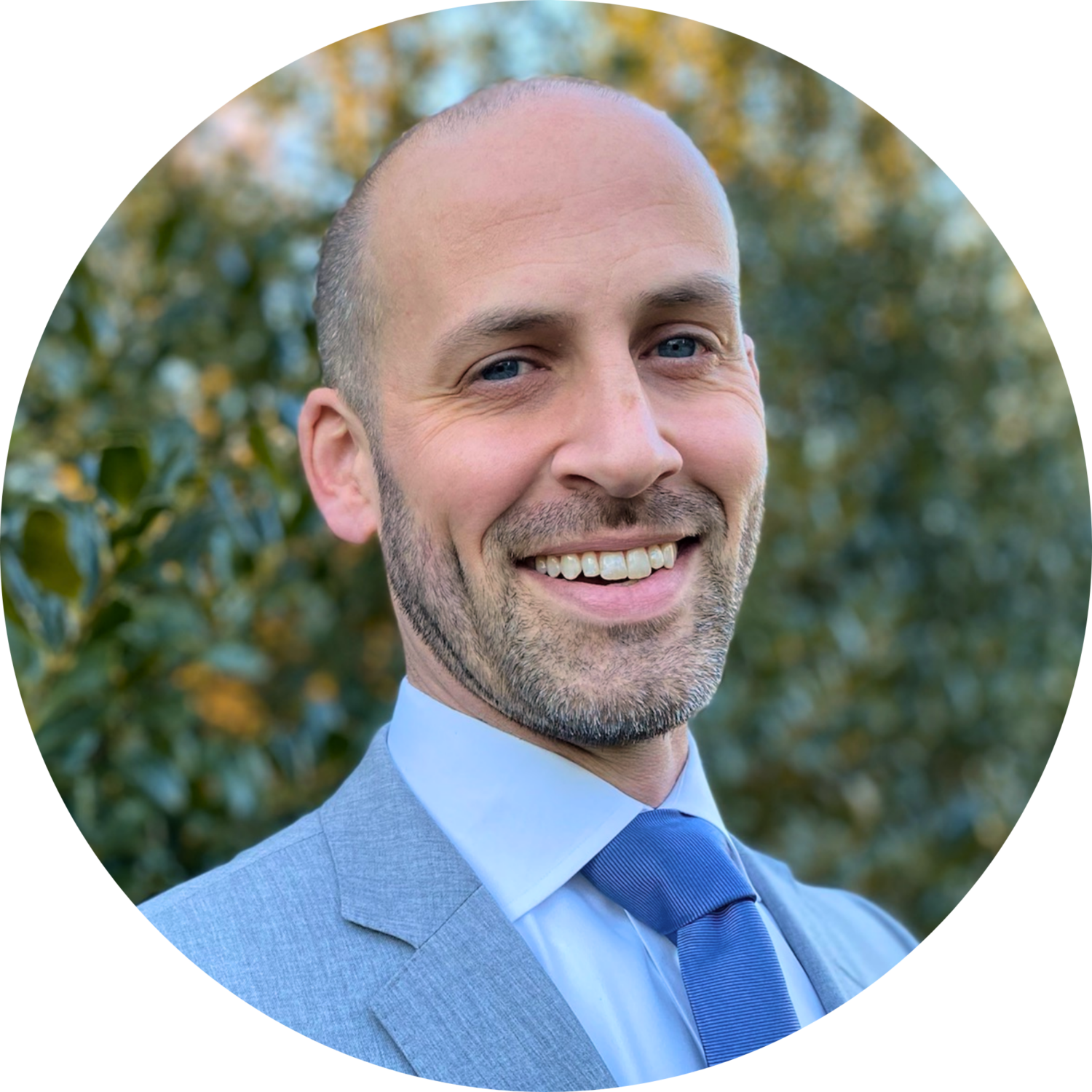
It is a boon to the law school that you have terrific professors and former alums who support the clinic.
Scott Keller ’07
Clinic Founding
The clinic was co-founded by Sturley and his former student Frederick, after the pair worked on a Supreme Court case together. They also recruited Professor Lynn Blais, who had worked closely with Sturley.
Frederick, a partner at Kellogg, Hansen, Todd, Figel & Frederick PLLC in D.C., was actively involved in teaching the clinic for a decade. Under his guidance, students participated in researching and creating rough drafts of sections of briefs, which professors helped to prepare, and Frederick’s firm finalized. Clinic students and faculty would moot Frederick before he argued cases at the court. Frederick has currently argued before the court around 60 times, including most recently Truck Insurance Exchange v. Kaiser Gypsum Co. during the clinic’s March 2024 travel to D.C. The clinic also conducted a moot.
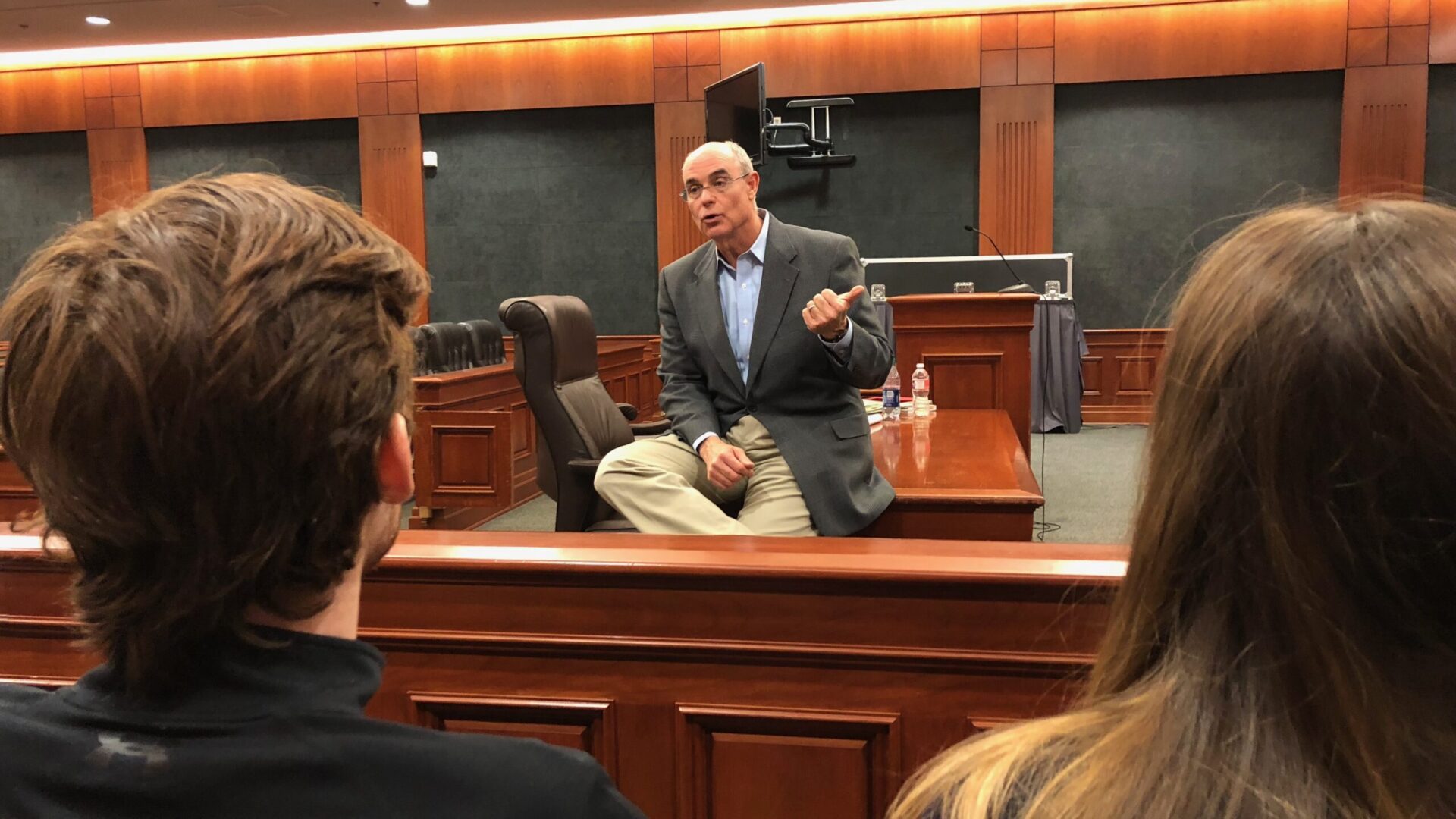
In the Court, an attorney for each side of a case presents arguments to the justices. With the advocate standing mere feet from the bench, judges interject, leading to exchanges with the advocate. “Students get an opportunity to see the inside of how a Supreme Court case is argued. Getting a window on the prep process is eye opening and invaluable,” Frederick says of the clinic. “For students who pay close attention, it is enormously educational to see how that process plays out.”
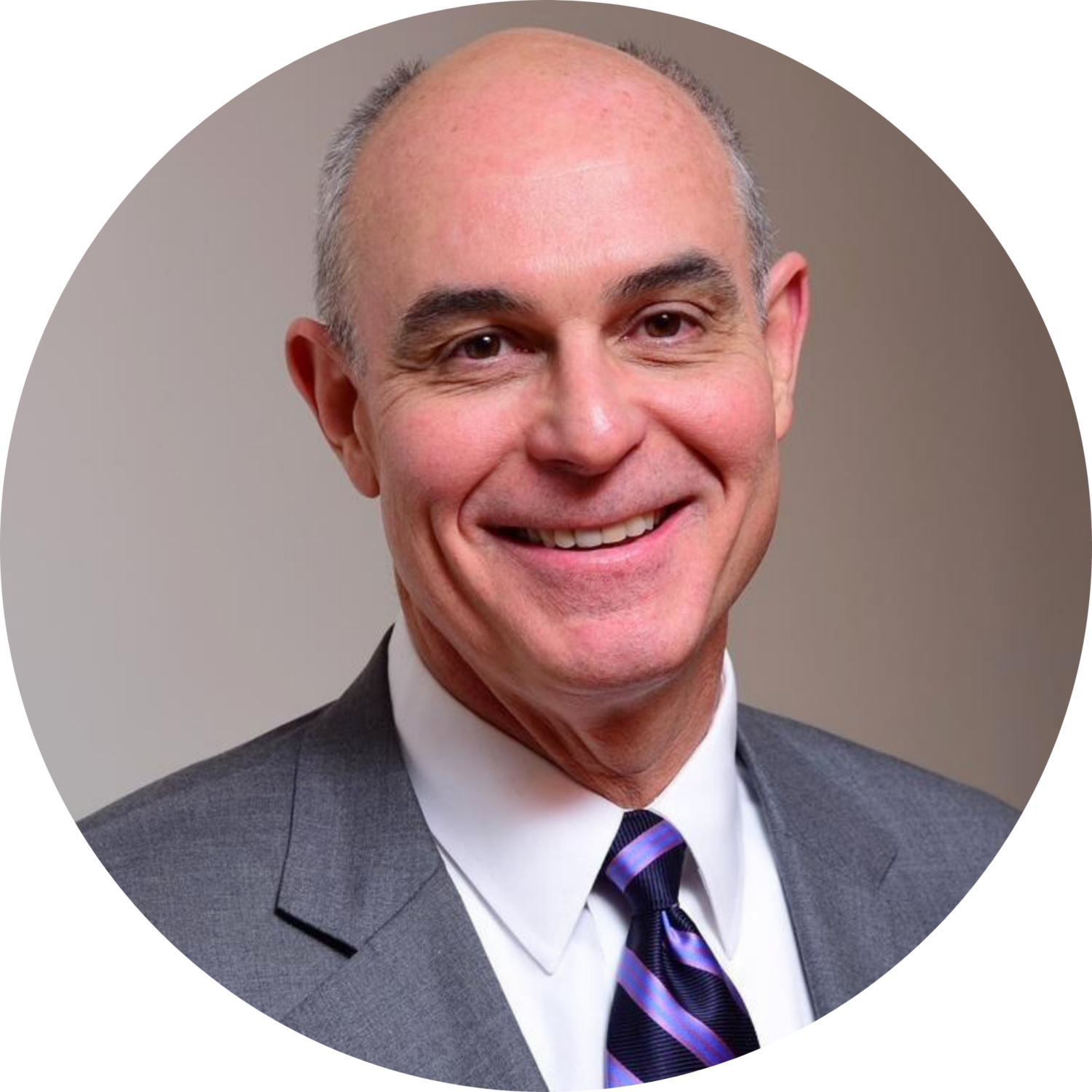
Students get an opportunity to see the inside of how a Supreme Court case is argued. Getting a window on the prep process is eye opening and invaluable.
David Frederick ’89
“It is a rare privilege for a normal citizen to have the undivided attention of the leaders of one of our three great branches of government for however long the argument takes,” he adds.
Busby became co-director in 2017, and Eskow also took on that title the following year. Alongside their efforts in the classroom, they’ve used their network within the Supreme Court Bar community to find cases for the clinic.
As a 3L, Kassandra Gonzalez ’19, now a staff attorney at the Texas Civil Rights Project in Austin, traveled to the Supreme Court to watch Frederick argue a case her class had helped moot. For Gonzalez, it was one of the highlights of law school. The justices asked Frederick questions her class had prepared him for. “Our work behind the scenes helped the actual oral arguments of a case,” she says. The experience further solidified her desire to do more appellate work.
Paying Attention
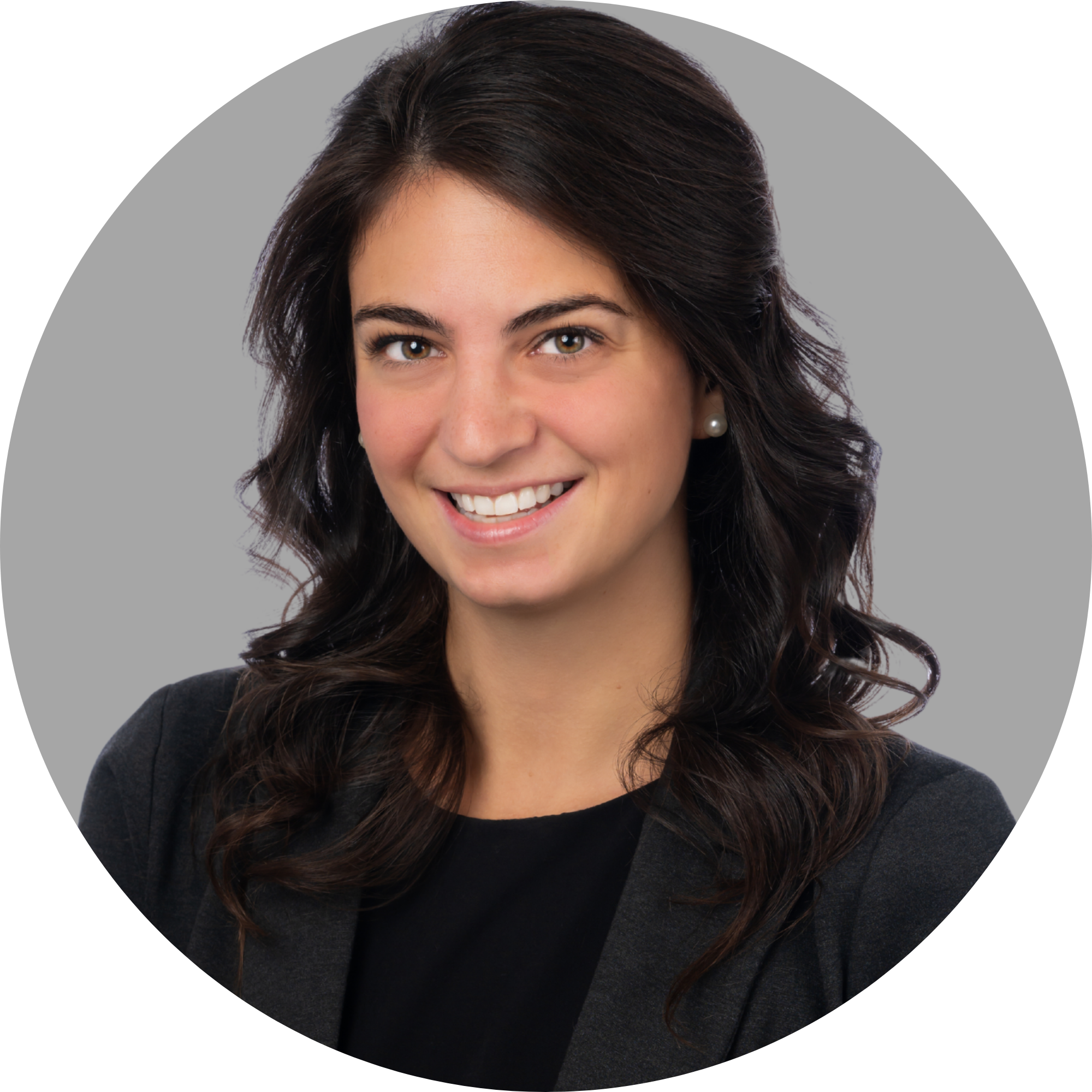
Frederick urges young lawyers to go to court as much as they can and to pay close attention. He still learns something on every visit. “Even now, I’ve been to court hundreds of times, and I still learn by watching the judges or justices, other lawyers, and the audience,” he says. Preparing to argue and then feeling the pressure in a courtroom offers the greatest lessons, he says. “But you can also learn by watching how other people do it.”
Many of the questions asked during the clinic’s moots—for example, in Bidwell’s moot topics ranged from historical support for her client’s claim to a YouTube video of the event—came up during the oral argument, and Sarah Chavey ’24 says the class got “to watch how masterfully the advocates handled them.” Chavey is now spending a year clerking for Judge Bobby Shepherd of the Eighth Circuit in El Dorado, Arkansas.
3L Brandon Charnov was also inside the court last spring. He’d listened to Supreme Court proceedings in the past, but “nothing compares to seeing oral arguments live,” he says.
“The main takeaway that I want to implement in my practice is to just be myself,” Charnov says of watching Frederick, Bidwell, and Lisa Blatt ’89—who recently presented her 50th argument before the Court and faced off against Bidwell in March. “All three of these advocates had unique styles that worked for them because they came off as authentic.” Rather than emulating others, “I want to find an advocacy style that reflects my personality and values,” he says. “This will be the best way for me to connect with and persuade a panel of judges.” After graduation, Charnov will clerk for Justice Brett Busby on the Supreme Court of Texas, and in the longer term plans to specialize in appeals, with a particular focus on the Supreme Court of Texas and the Fifth Circuit.
Ramirez v. Collier
The clinic’s results have made national headlines. In 2022, the clinic helped secured an 8-1 verdict in Ramirez v. Collier when it served as co-counsel for John Henry Ramirez. He successfully sued the State of Texas for denying his religious liberty right to have his pastor lay hands on him and pray during his scheduled execution.
“The case implicated multiple areas of the law—religious liberty, capital punishment litigation, the Prison Litigation Reform Act, and equitable remedies,” says Eskow. “We had to balance all of these areas of law at the same time and anticipate which justices might rule in our favor on which issues and what path would most likely lead to the outcome Mr. Ramirez sought.”
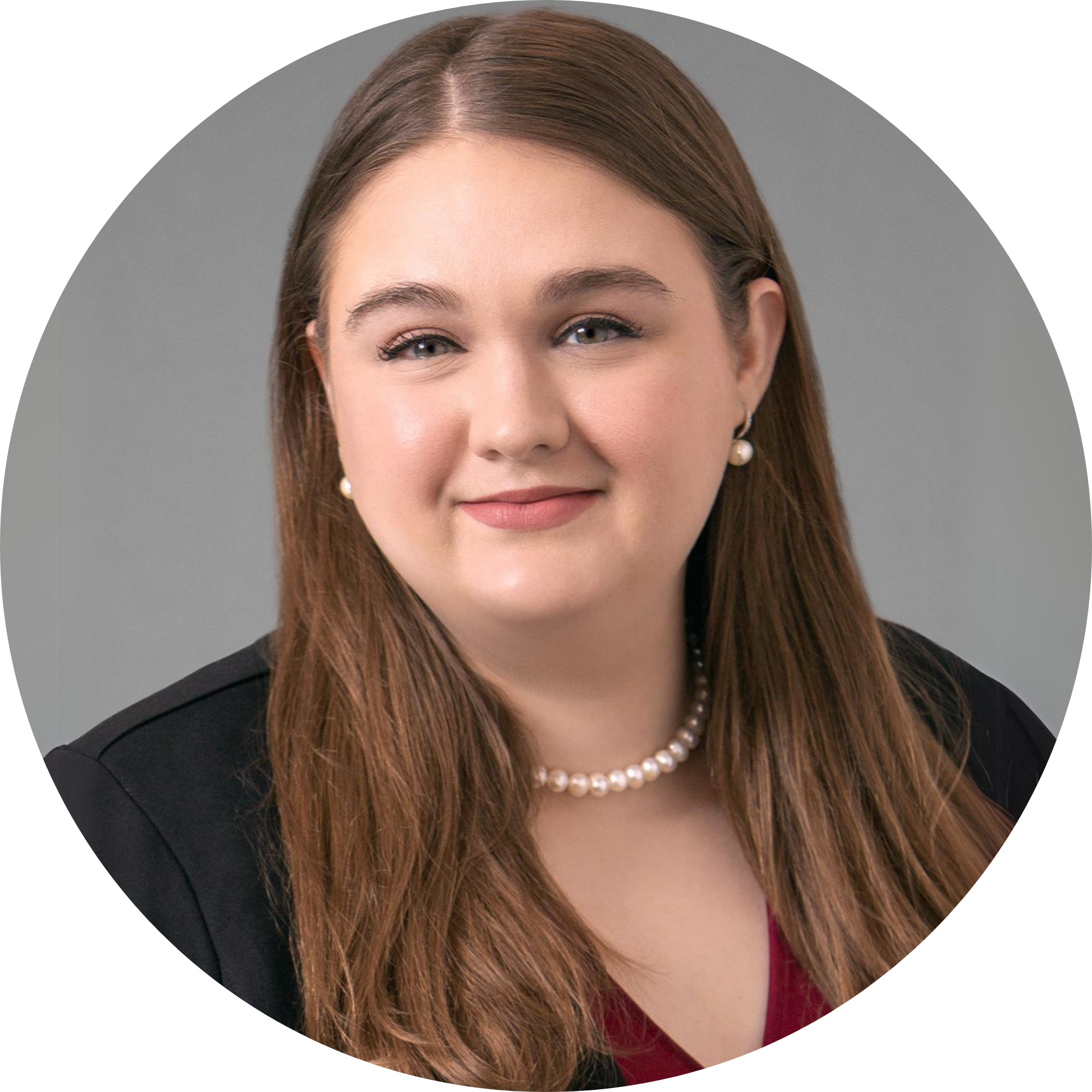
Their victory was the result of a whirlwind effort, which began the morning after the Supreme Court initially stayed Ramirez’s execution and granted his certiorari petition. Seth Kretzer ’03, Ramirez’s counsel of record, reached out to the clinic to partner with him on the case as merits co-counsel. The clinic agreed, with the advanced students who returned after completing a semester with the clinic immediately expressing their enthusiasm to faculty. Grace Miller ’22, now an associate with Sheppard Mullin in Dallas, was in class when she received a text from Eskow about the case inquiring into Miller’s availability. “I remember just being like, ‘Oh, I’ll drop everything to work on this case,’” Miller says (although she still completed her readings and other coursework).
Eskow explains the clinic’s strategy involved working to make the briefing very user-friendly for the judges at a practical level, documenting historical practices in the state and federal systems drawn from publicly available sources, and packaging legal and practical information “for the Court to compensate for the lack of a fully developed trial record in an emergency-docket posture, while still obeying rules regarding appellate review,” she says.
The students put in several weeks of effort. That included making visits to the Austin Public Library to track down books about death row for possible examples of the Texas Department of Criminal Justice previously allowing physical touch and audible prayer. And plenty of all-hours texts, emails, and phone calls between the students, professors, and others working on the case.
Students walked away from the experience having created and executed a legal strategy on an abbreviated timeline, organized record and other materials for ease of reference, creatively constructed factual material without a well-developed record, and collaborated with experts both on and outside the core team (without violating confidentiality) about specific questions, such as religious liberty.
“One of the things that I learned from the clinic is that you can do really good work in a short amount of time if you have a good team,” Miller says. And the result was a massive win. “I felt vindicated, and like we really did good work for Mr. Ramirez,” says Miller.
Participating in a Supreme Court merits brief and winning “may be the only time that happens in my entire career,” says the ACLU’s Pelaez.
Students’ experience on Ramirez demonstrated the value of teamwork and what to expect when working under pressure.
Given the high stakes, the outcome proved law isn’t simply an academic exercise. “There’s always somebody on the other end that you’re representing,” Miller says.
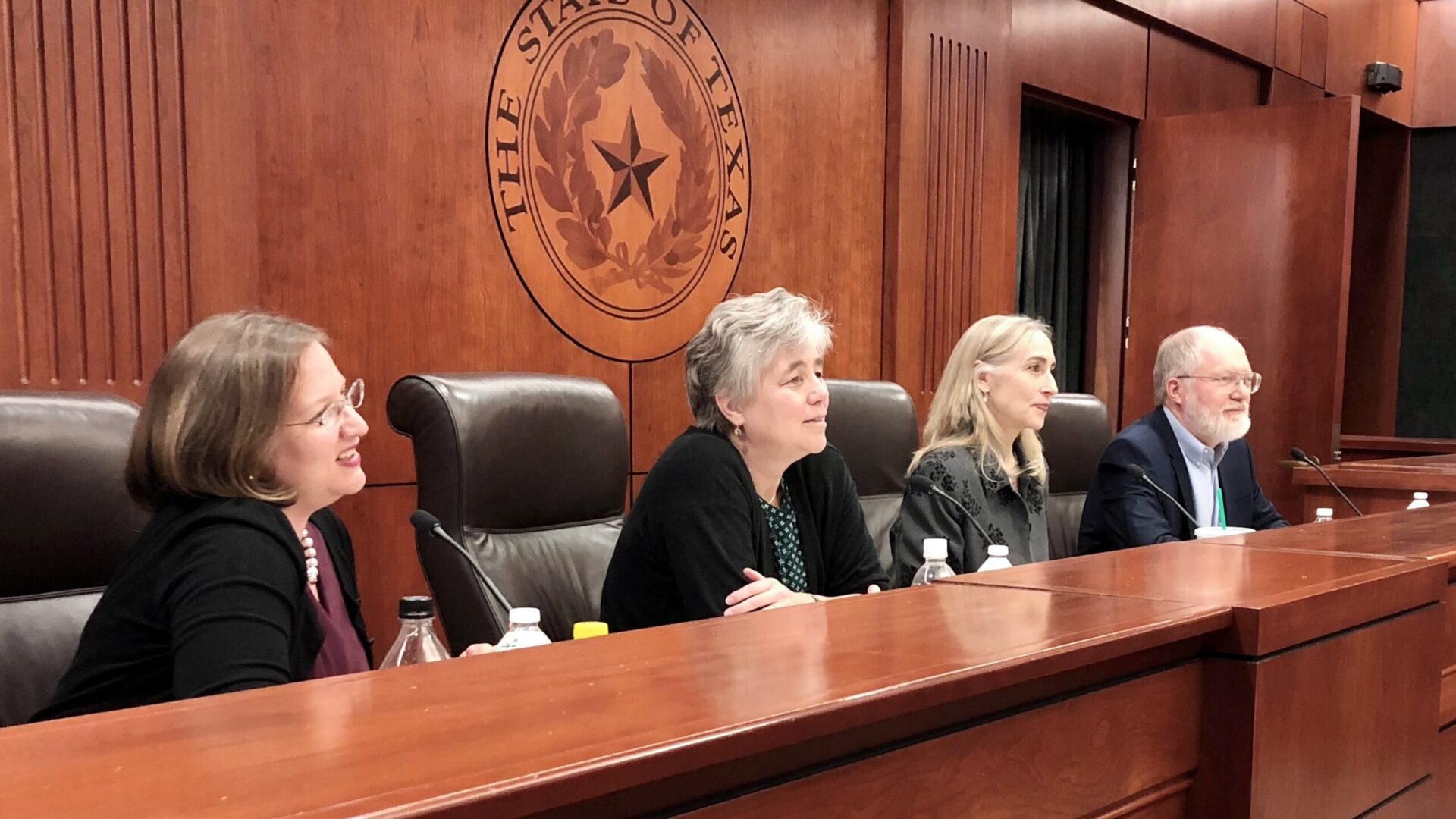
Building a Network
With two decades of history, the clinic has built an impressive and engaged network of alumni. “We have close relationships with our students, they go on to do exceptional things, and we bring them back,” says Eskow. At the end of each semester, clinic alums return to Texas Law to discuss their career paths, experiences, and clinic lessons that helped them find jobs. “So, we view it as an ongoing process,” says Eskow. For example, during the clinic’s most recent trip to D.C., students enjoyed a dinner with clinic faculty and local alumni.
Alumni also highlight their ongoing clinic relationships. During his time as solicitor general of Texas, Keller also benefitted from a clinic moot. “As an advocate, the more you make the case, the better your presentation” he says. By gaining different perspectives, arguments on complex topics can become more persuasive for generalist judges who lack unique subject matter expertise. “Having a 3L ask a question about the case helps hone your argument in a way that makes it as easy as possible to understand,” Keller says.
We have close relationships with our students, they go on to do exceptional things, and we bring them back.
Prof. Lisa Eskow
(Alongside Bidwell and Keller, the third clinic alum to argue before the court, William Peterson ’08, was also mooted by the clinic. And in June 2024, the court announced that Bidwell won a per curiam main opinion.)
Kassandra Gonzalez has also continued to work with the clinic. Following graduation, as an Equal Justice Works fellow, she collaborated with the clinic to write an amicus brief related to Medicaid employment requirements for her employer and other medical legal partnerships, as clients of the clinic. “I got to work with the students to give advice on drafting and basic Medicaid education and guidance,” she says. Gonzalez has also returned to serve on clinic panels where she speaks to its students interested in public interest work. One of those former students, Danny Woodward ’23, is now a legal fellow at the Texas Civil Rights Project.
Even lawyers unaffiliated with Texas Law continue to turn to the clinic for its expertise.

Dan Geyser, partner and chair of the U.S. Supreme Court Practice at Haynes and Boone, LLP who offices in Denver, has been mooted by the clinic nine times. He first worked with the clinic while preparing for Taggart v. Lorenzen in April 2019. “The experience was outstanding,” Geyser says. “The moot was exactly what you want when preparing for a SCOTUS argument: incisive, diligent, exhaustive questioning followed by superb insight and advice. And that was true of both faculty and students alike!”
He describes the clinic’s work as insightful and sophisticated. “It hits all the notes you’d expect from veteran advocates—which is unsurprising given the talent and skill of the clinic faculty—but it’s exciting to see such high-level contributions coming from the class,” Geyser says.
‘Formidable’ Experience
That’s because clinic students are well prepared.
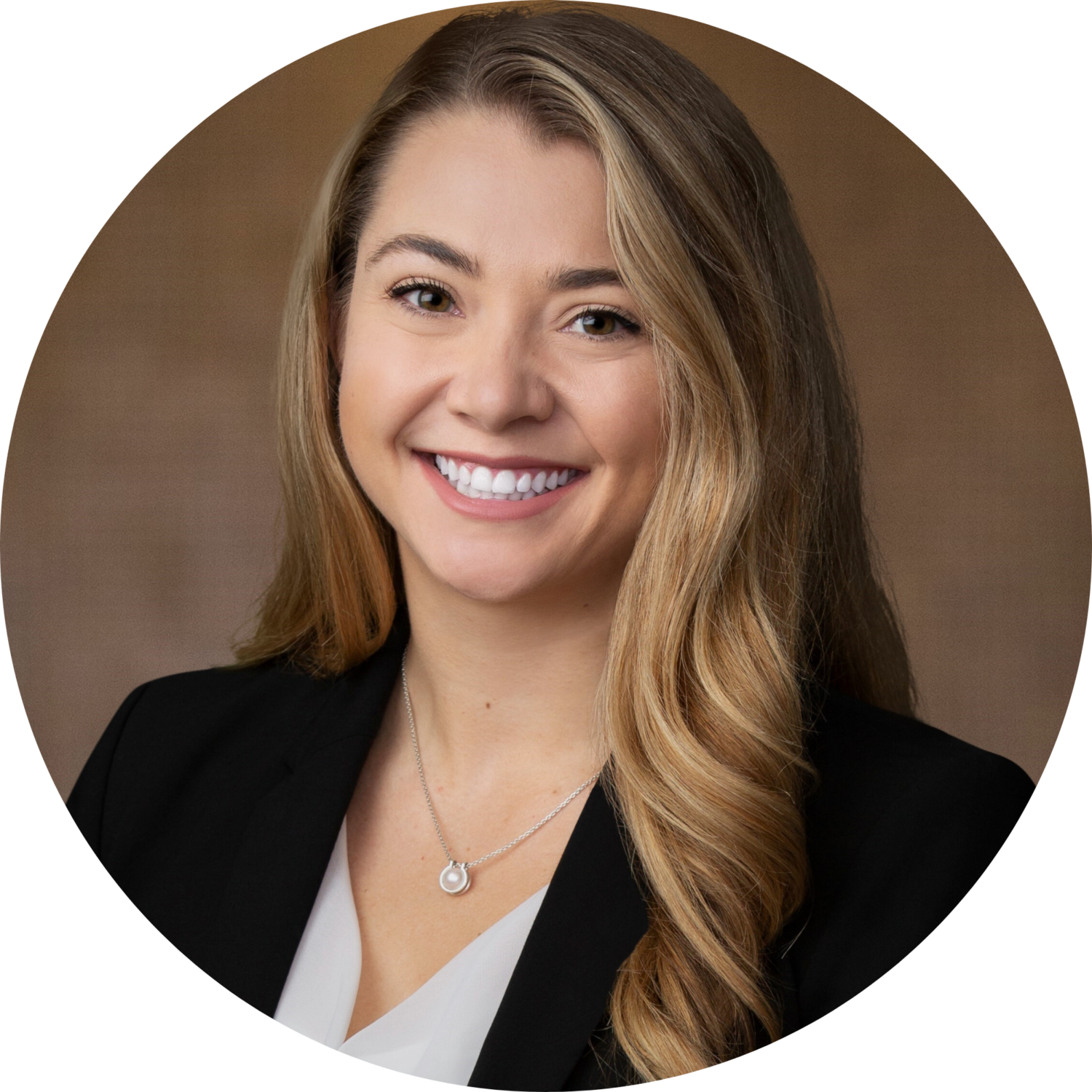
Kalli McCoy ’21, a dispute resolution associate at Baker & McKenzie LLP in Houston, calls the clinic “immensely helpful” in her career, enabling her to enlist in the firm’s team for Yegiazaryan v. Smagin at the Supreme Court: When the lead attorney in the case learned of McCoy’s clinic background, he invited her to join the team for Baker’s first SCOTUS argument in 50 years. It secured a June 2023 victory in a 6-3 decision.
“My experiences in the clinic and at Texas Law were integral to the contributions I was able to make in this case, from researching to briefing to cite checking, and most notably in argument preparation,” McCoy says.
She’s not alone in her praise. As a trial attorney, Miller of Sheppard Mullin applies lessons from the clinic daily. Those include voicing an opinion and sharing research findings even when you’re relatively new in your career. “Not a lot of junior attorneys are willing to tell someone that they might be wrong or make suggestions that take the case in a different direction,” she says. “And it really is important because you have the background knowledge.”
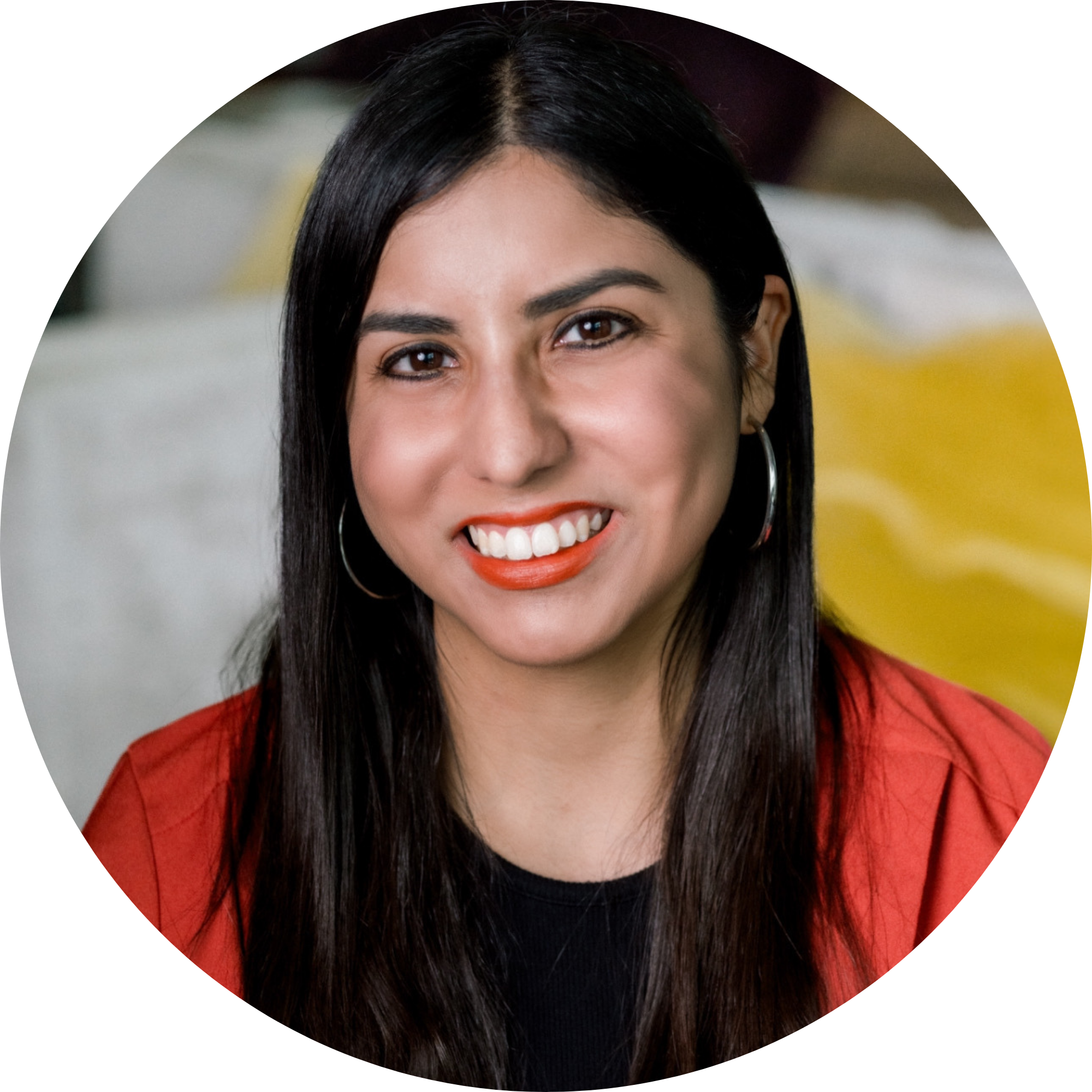
The clinic experience was one of my most relevant and formidable in law school that actually translated to my job.
Kassandra Gonzalez ’19
As Miller considers how trial judges think about complying with the law and the possibility of being overturned on appeals, “it’s important to have had opportunities to think on both sides of the coin to have a successful outcome for your client,” she says.
“The clinic experience was one of my most relevant and formidable in law school that actually translated to my job,” the Texas Civil Rights Project’s Gonzalez says. “Writing, researching, and being able to quickly turn around a public comment, an amicus brief, or some brief where we’re negotiating a settlement with the government—the hard skills of the Supreme Court clinic are easily translatable to everything I do.”
So, Gonzalez makes sure to give her endorsement to Texas Law students as often as possible. “Whenever I have mentees, I always say they should do the Supreme Court clinic,” she says.
